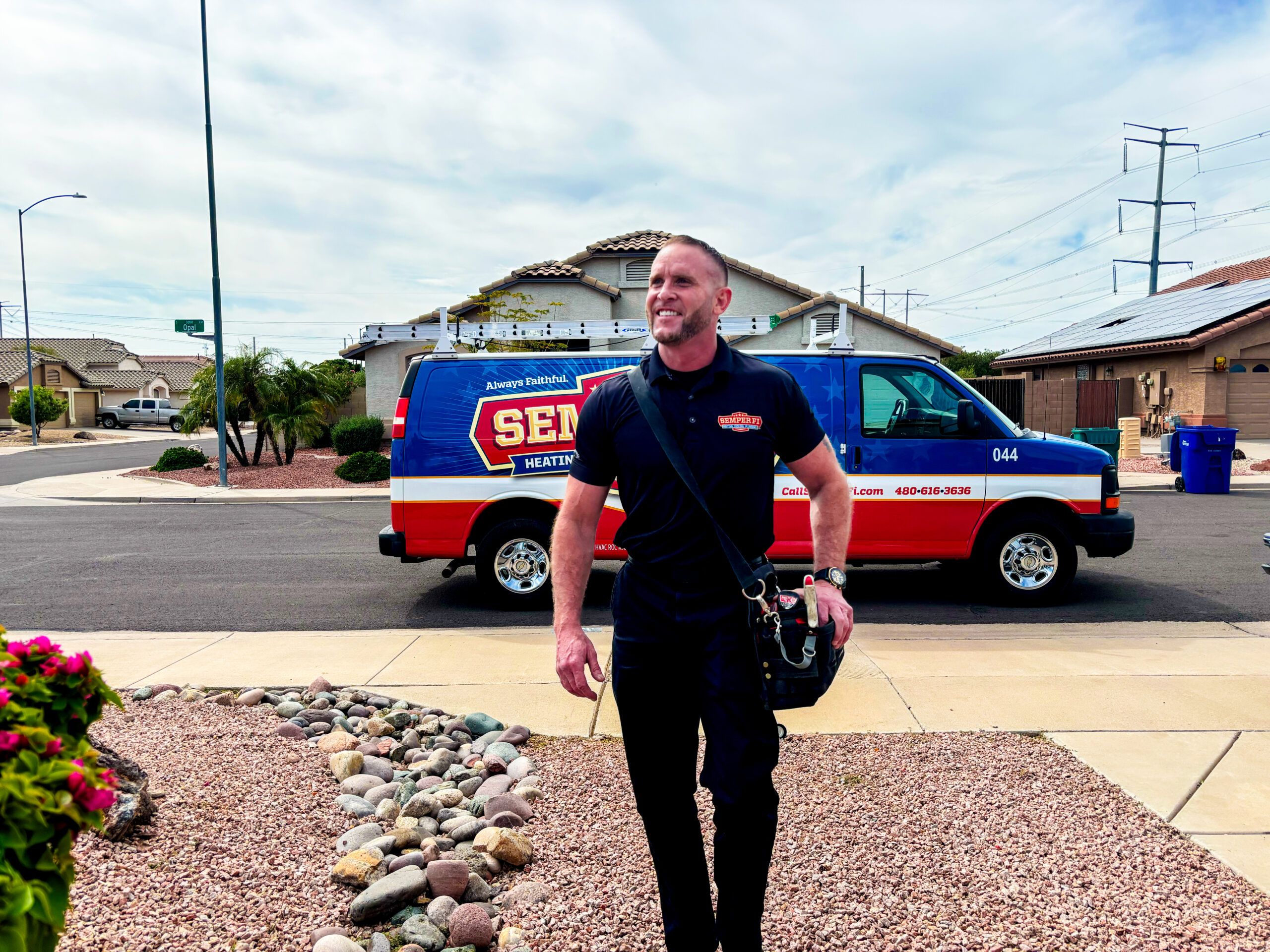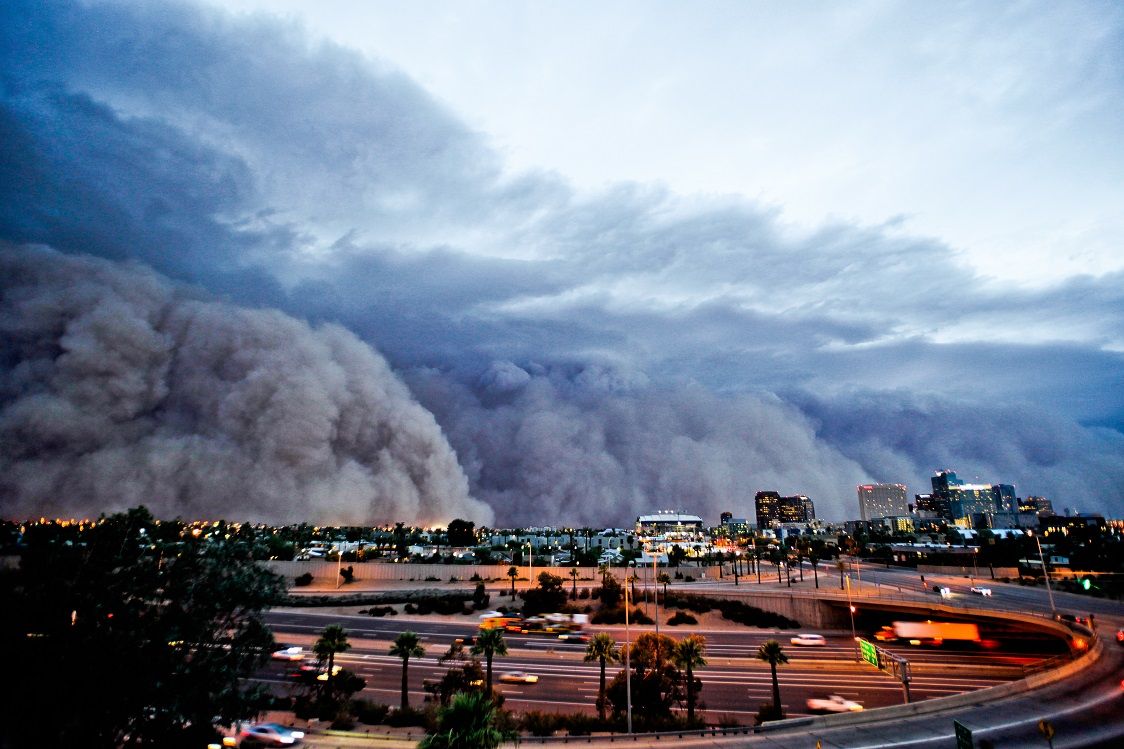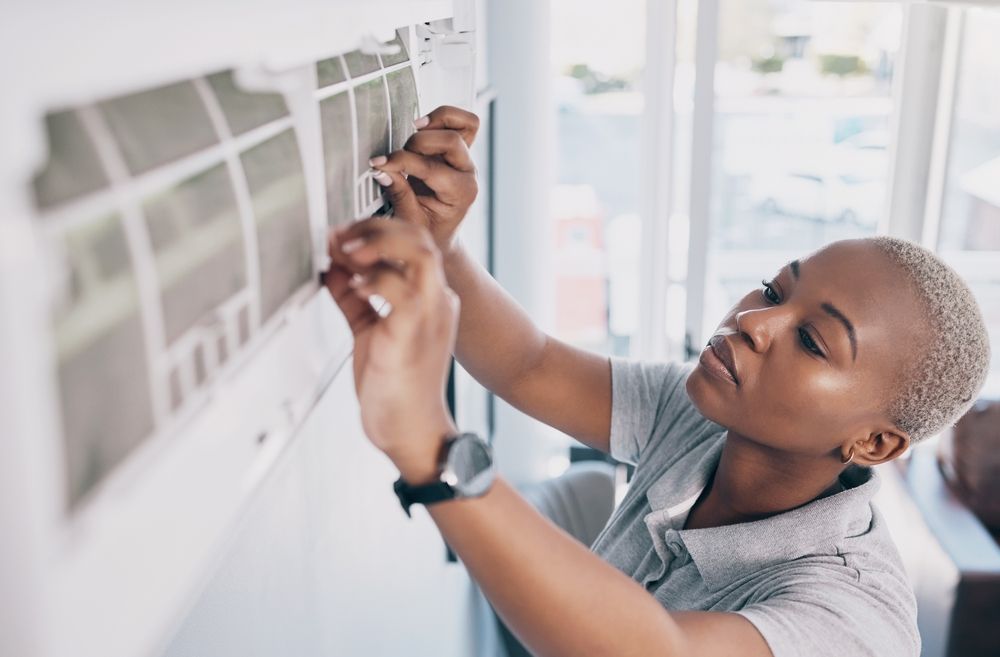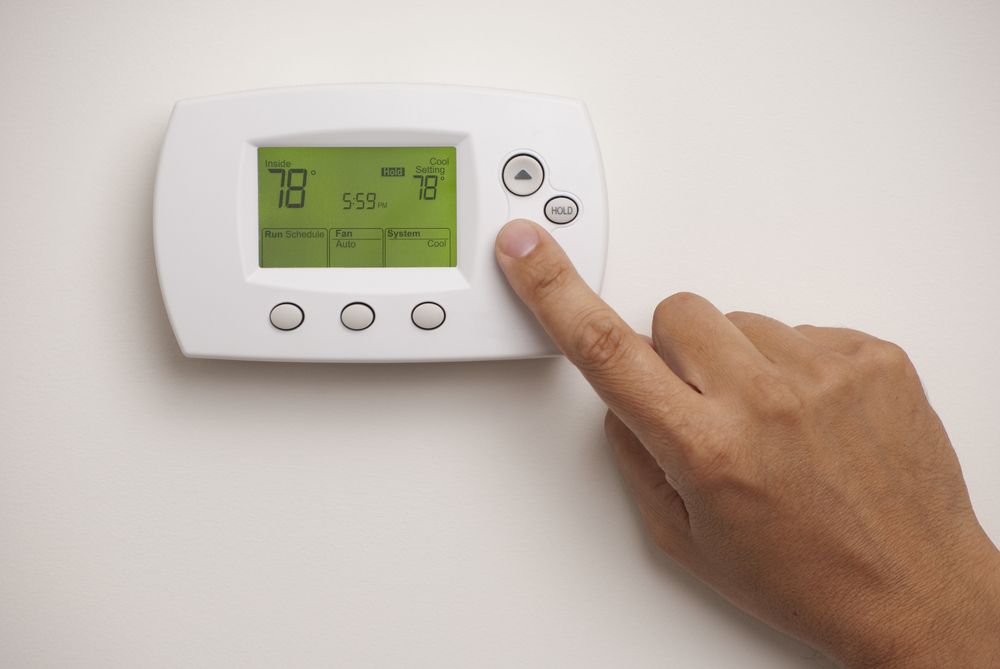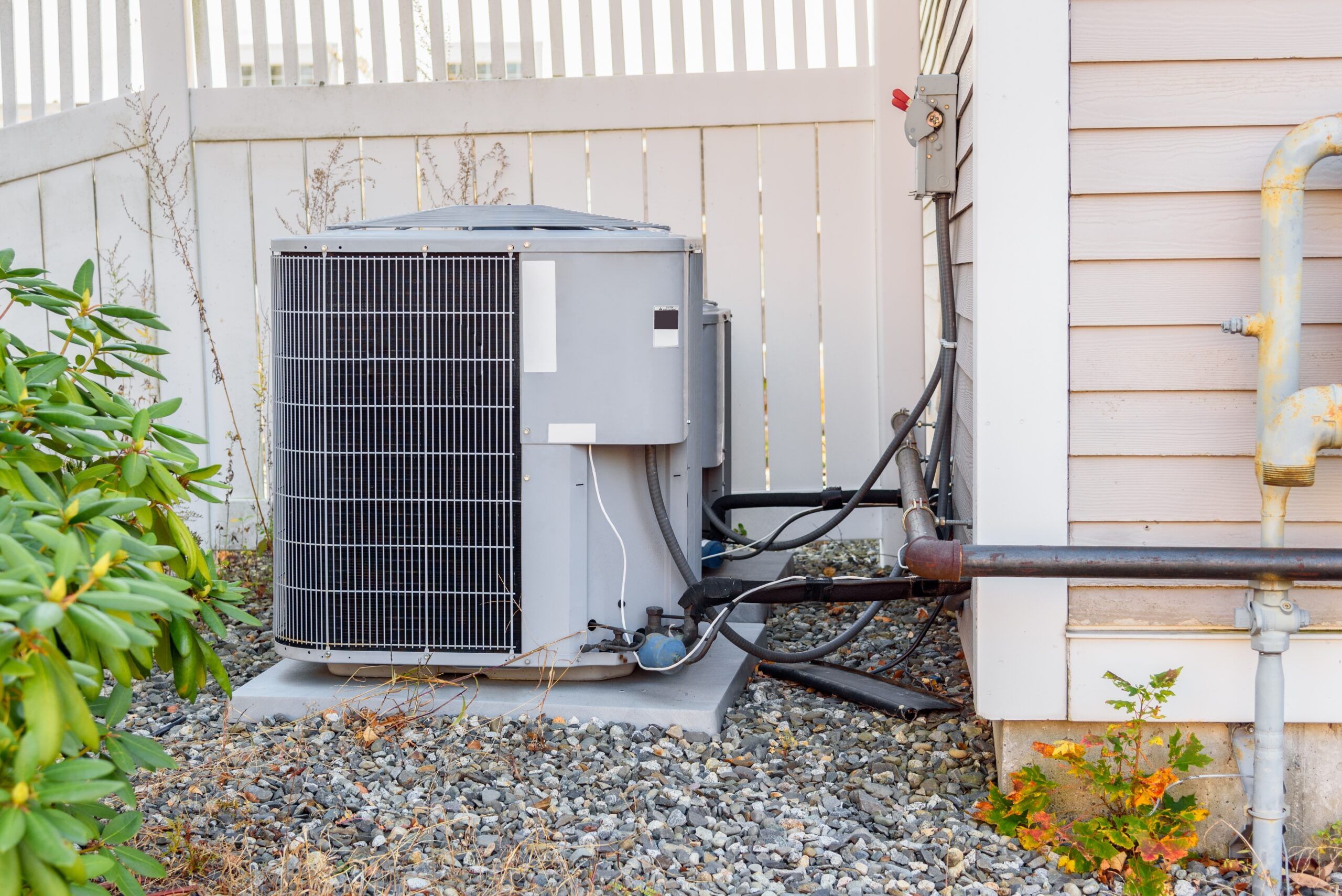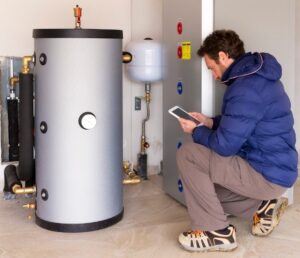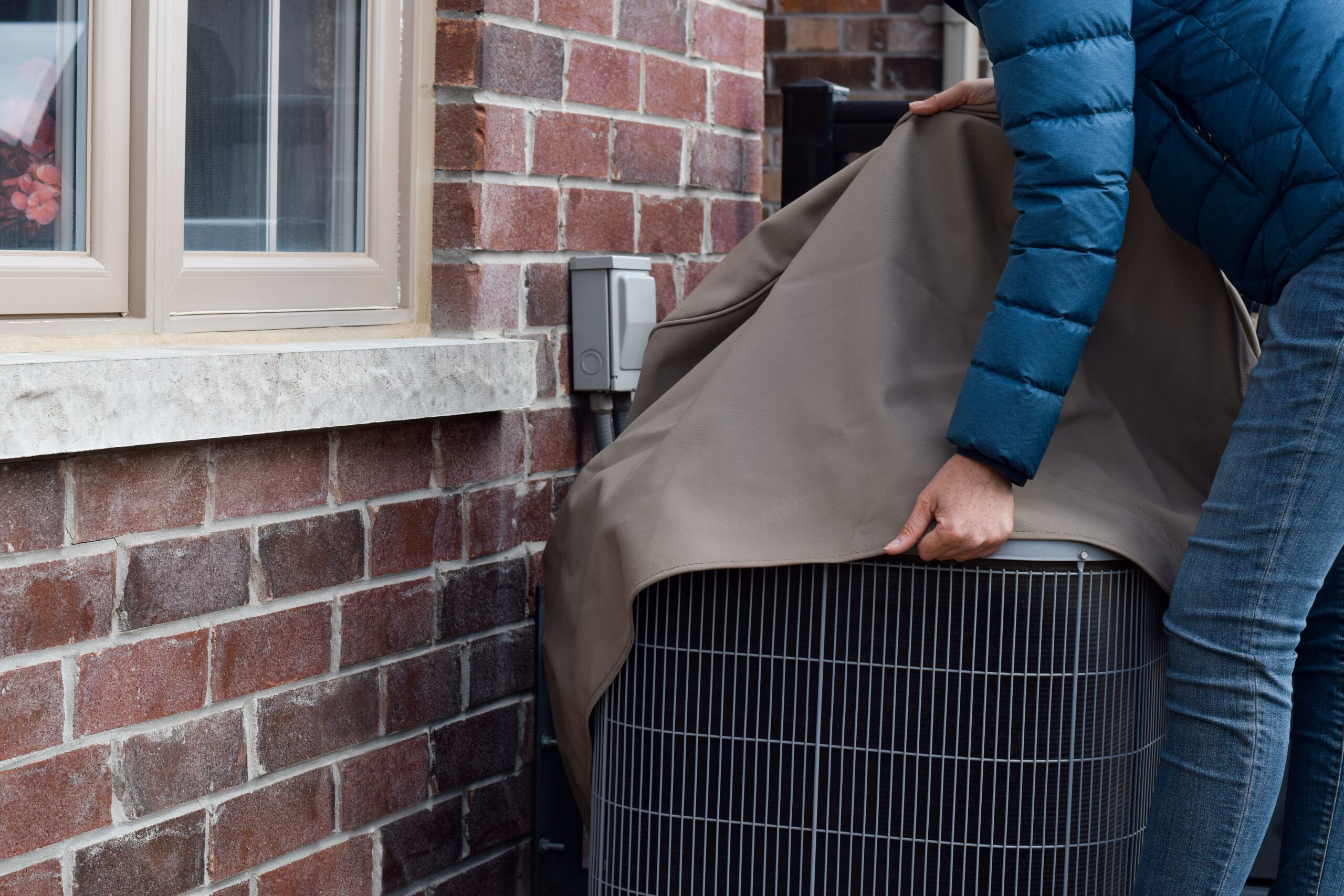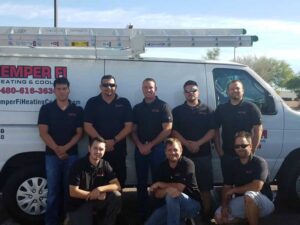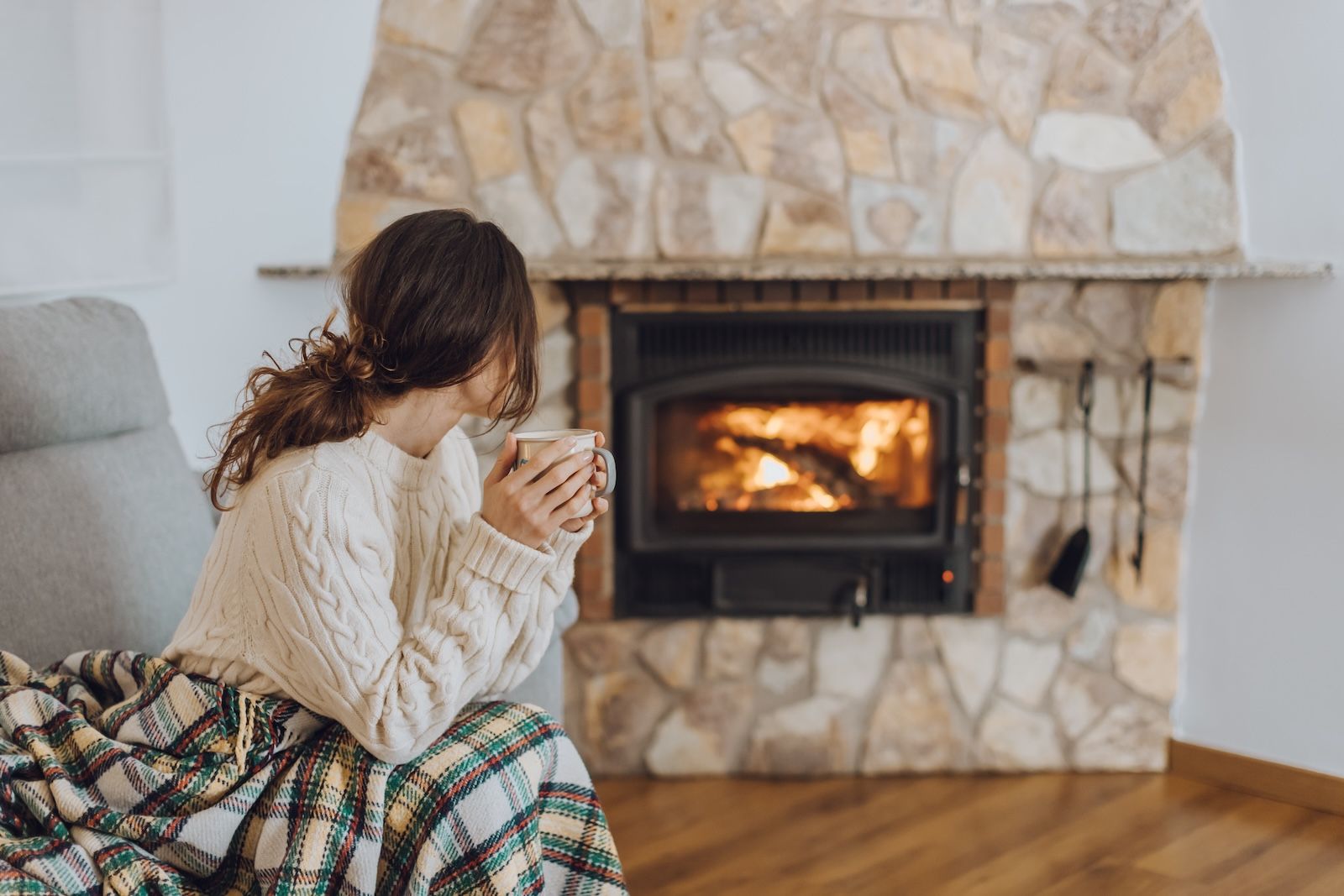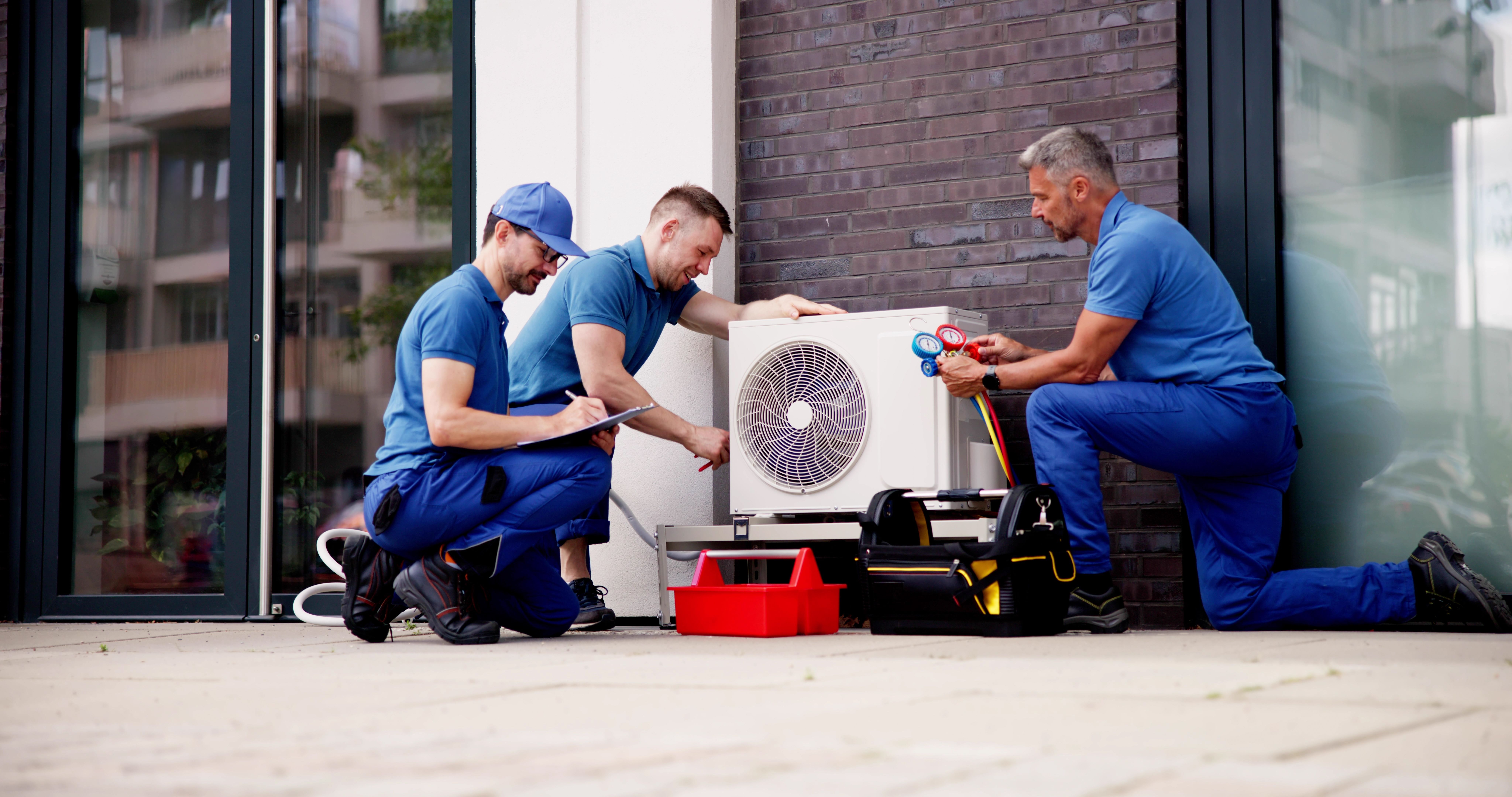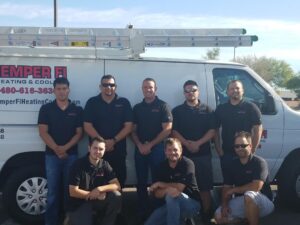When you come home from a long work day, you want your space to feel comfortable and cool to protect you from the summer heat. However, summers in the desert can get blazing hot, and your air conditioning must work overtime to maintain your desired room temperature. This can quickly skyrocket your monthly energy bill and reduce the longevity of your HVAC system.
The question homeowners in AZ and NV end up asking is, “How can I save money in the summer without sacrificing comfort?”
Your thermostat’s temperature settings may just be the answer.
At Semper Fi Heating & Cooling, we have years of experience working in the HVAC industry, and we know the ins and outs of air conditioning. We’ll go over some temperature recommendations for different times of day, other tips and tricks you can use to reduce your energy usage and debunk some common misconceptions about how to run your AC system.
What is the Best Temperature to Set Your AC?
You want your living space to feel comfortable without spending hundreds in utility costs. But is there an exact temperature that gives you the best of both worlds? There is!
The Department of Energy (DOE) recommends setting the thermostat to 78°F when you’re at home. Why this specific? They’ve found that this temperature is the perfect balance of personal comfort levels and improved energy efficiency. To put it simply, you save money while still being cool and comfortable on the couch.
While this is a great rule of thumb, there may be some personal adjustments you need to make so you remain comfortable in your home. Every home is different, and everyone’s comfort preferences are different, so you may need to adjust. However, keep in mind that setting a temperature cooler than 78 degrees will increase your monthly costs.
For example, people who live in an area with high humidity may want to run their system a little more to account for the stuffiness. If you’re an active person, you may want a cooler home when you come home sweating from a workout. For homes with more insulation, you may need to run your system less frequently to maintain a comfortable temperature.
Best AC Temperature for Sleeping
No one likes waking up sweaty in the middle of the night. Cooler temperatures when you sleep can improve the quality of your sleep and help you wake up feeling refreshed. The recommended thermostat setting for sleeping is anywhere between 60-67°F.
This is a stark contrast to the daytime temperature recommendation, with more than a 10-degree difference! Our bodies regulate our temperature differently while we sleep than while we’re awake. Many people run a little warmer when they sleep, and our internal temperature can vary depending on the sleep cycle stage. Keeping your bedroom a little cooler at night can help balance this extra heat, allowing you to fall asleep and stay asleep without waking up sweating.
If you’re worried about dropping the thermostat that low and overrunning your AC system, there are alternative things you can try to keep yourself cool. Utilize your ceiling fan to draw warm air up towards your ceiling and redistribute it around the room. You can also invest in a dehumidifier to reduce the moisture in your air and decrease that stuffy feeling. Lastly, invest in thin, breathable bedsheets that keep you comfortable without trapping your body heat.
Adjusting AC Temperature Based on Time of Day
Another great trick to help reduce the energy usage of your air conditioning during the summer is to make adjustments depending on the time of day and whether or not you’re home.
If you work in an office or travel enough to where you aren’t home during the day, you can increase the thermostat to around 85°F. It may be a little toasty, but you’re not there to feel it, and it reduces the amount of energy your HVAC system uses throughout the day. If you have pets who stay home all day, keep their safety and comfort in mind and adjust how much you increase the thermostat.
When you get home from work, you can reduce the temperature back down to around 78°F. When it’s time for bed, you can drop it further to keep your bedroom cool. You don’t want to immediately drop the thermostat from 85 to 65, as this will cause your AC to run continuously and burn a ton of energy to drastically drop your home’s temperature. Do it gradually throughout the evening to reduce the stress on your HVAC system.
It can be tough to remember to manually change your thermostat multiple times a day, and forgetting to adjust can cost you wasted energy. For peace of mind and improved efficiency, you can invest in a programmable or smart thermostat that makes the adjustments for you. You can program the thermostat to hold at a certain temperature at certain times of the day so you don’t have to worry about it.
How to Keep Your Home Cool Without Overworking the AC
When it gets especially hot outside, you want your home to be an oasis from the blazing sun. However, rising temperatures mean your air conditioning has to work harder to maintain the proper temperature in your home. This can strain the system and result in higher energy bills, but there are other things you can do. Here are some additional tips you can use to keep your home cool without running the air conditioning as much:
- Utilize Air Circulation: Turn on your ceiling fan and invest in portable fans to keep air moving. Good air circulation prevents your home from getting stuffy and stale.
- Use Window Treatments: The sun’s rays can heat your home even further. Close your blinds during peak sunlight hours to keep the heat out and your home cooler.
- Seal Cracks & Improve Insulation: Sealing cracks and improving your home’s insulation keeps the heat out and traps the cold air in—that way your HVAC system doesn’t have to work as hard to maintain temperatures.
- Be Aware of Heat-Generating Appliances: Reduce how often you use appliances that create heat such as the oven or dryer during peak hot hours in the middle of the day.
Energy-Saving Tips for Air Conditioning
Along with personal habits and thermostat adjustments, you can reduce your energy usage by taking care of your HVAC system. Ensuring your system isn’t working harder than it should saves you money and reduces the wear and tear on your system. Other energy-saving tips for your HVAC system include:
- Set the thermostat fan to “Auto” instead of “On” to reduce how often the fans run.
- Upgrade your home to a newer, more energy-efficient AC system with a good SEER rating.
- Keep up with routine maintenance such as cleaning coils, replacing filters, and checking the refrigerant levels.
- Create outdoor shade with landscaping and planting trees to reduce your home’s heat absorption.
Common AC Temperature Myths Debunked
There’s a lot of contradicting information on the internet about what the best temp to set the AC at is, and it can be tough to know what to believe. We’re here to debunk common AC myths so you can make an informed decision on what setting works best for your home:
Myth: Lowering the AC to 60°F Cools Your Home Faster
Some people argue that setting the thermostat to a lower temperature makes the system run faster and cools your home quicker. The reality is your HVAC system runs at the same rate no matter how low you set the thermostat; all it does is make your air conditioner run for longer and use more energy.
Myth: It’s Best to Turn Off the AC When You Leave the House
Another common argument is that since you’re not in the home, you should shut off your system entirely. However, this allows your home to skyrocket in temperature and get stuffy. When you get home, not only is your home going to be unbearably hot, but now your AC will have to work overtime to bring the temperature back down. It’s more energy-efficient to set the thermostat higher than it is to shut it off completely.
Myth: Fans Will Cool the Room
Box fans and standing fans don’t cool the air in your home. All they do is circulate the air and prevent it from getting stagnant and stuffy. The breeze cools us off, but it won’t change the overall temperature reading in your home.
Finding The Perfect Balance: Comfort, Efficiency, and Savings
Adjusting the thermostat throughout the day, investing in fans, and being aware of your energy usage can reduce your energy expenses without sacrificing your comfort. Finding the best temperature for air conditioning is a balancing act between personal comfort and energy savings. It can vary from person to person based on personal preference, so use trial and error to find what works best for your home.
Smart thermostats and regular AC maintenance can improve the energy efficiency of your home and save you money in the long run. If you need professional HVAC help, look no further than Semper Fi Heating & Cooling. Our team is ready to help keep your home cool in the summer without breaking the bank. Schedule an appointment today and see what we can do for you!
